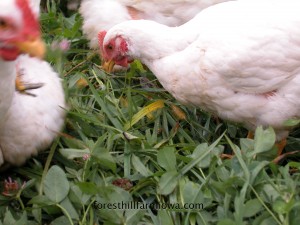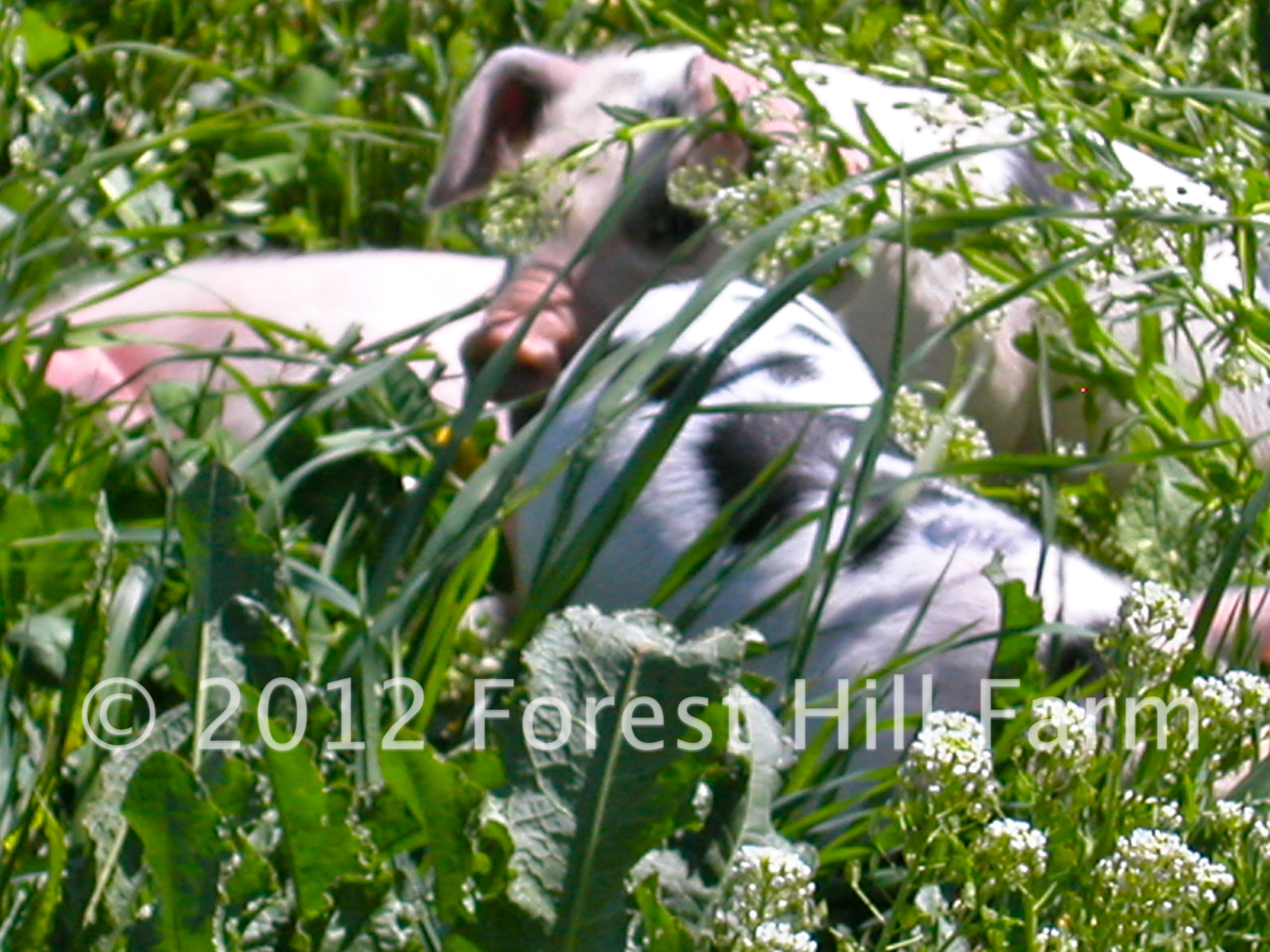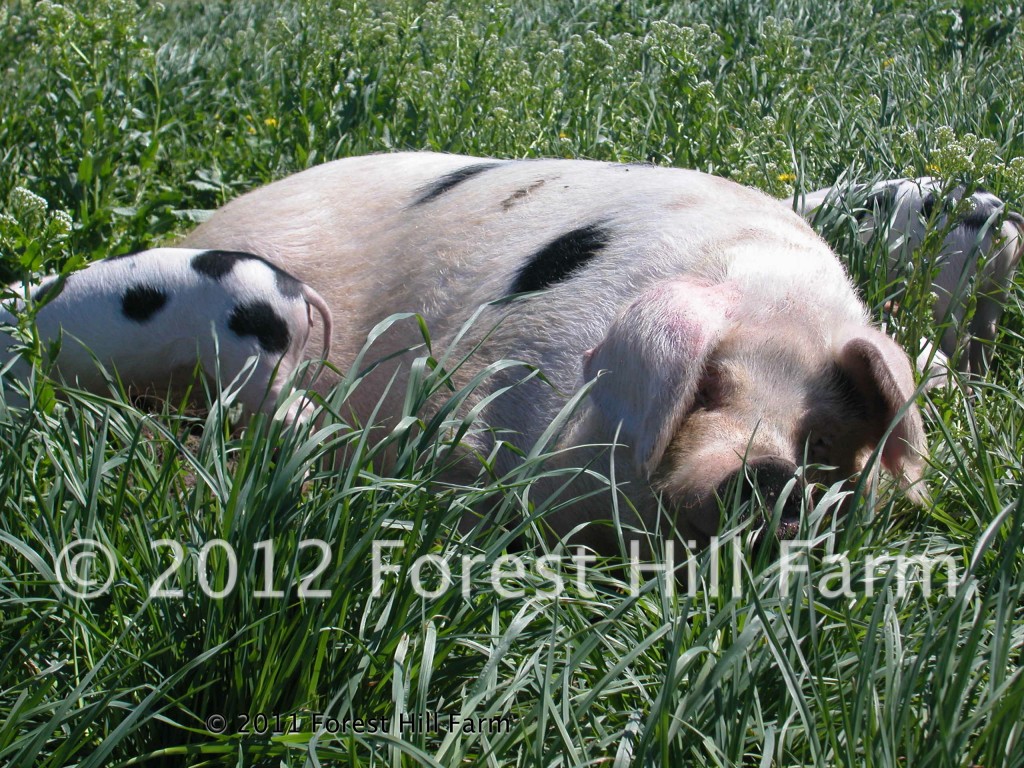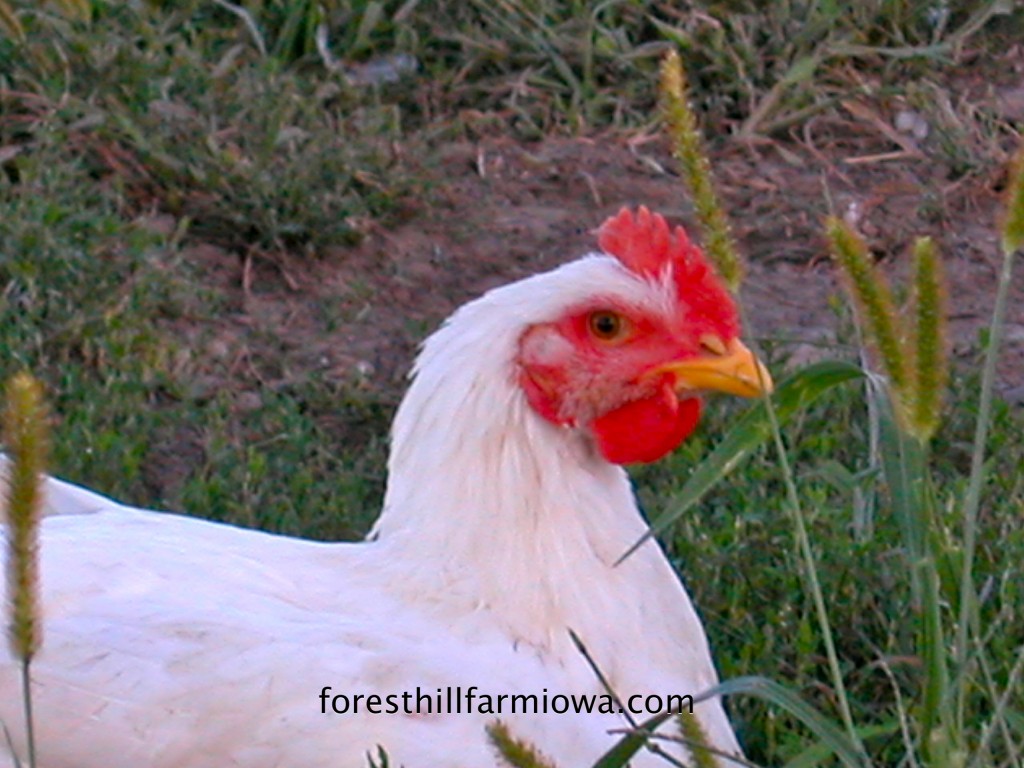Poultry Feed
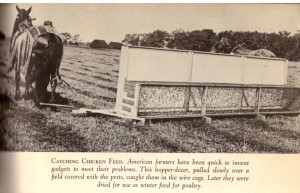
I love this picture. The grasshopper catcher is a perfect example of Necessity being the Mother of Invention. Insects are a great source of protein. Free range poultry fill up on grasshoppers keeping the pests under control. It's a seasonal feast, though. The pioneers solved this by catching grasshoppers in the hayfield and drying them for winter feed. This is just one example of alternatives to corn and soybeans.
Summer through fall our chickens, ducks and turkeys move through the pasture catching insects and eating greens. Take advantage this summer and send the kids outside with a net and a bucket. Let them catch bugs. Have them turn over rocks and look under logs. They'll find plenty to feed the chickens.
A couple of years ago I heard about the benefits of goji berries so I planted some. They're full of vitamins but they taste terrible. Now, instead of using them myself, I dry them for chicken feed. Apparently the chickens don't mind the bitter flavor. Goji berries are easily dried and stored for year round use.
In certain areas of the country its not easy to buy small grains. Here in Iowa corn is king, followed by soybeans. Finding wheat is tough – no one grows it commercially in this area. There's no market for it here. Growing food plots gives the flock both exercise and superior nutrition. Plus, you'll have healthy eggs and meat. A food plot of small grains; wheat, oats, and barley inter seeded with clover and alfalfa provides a balanced diet when grazed green or cut and dried for winter feed. These plots are terrific for growing chicken feed.
This is the time of year to think about feeding the flock in the winter. Learn to sprout grains or grow fodder. The nutritional value of the two is quite different. In sprouted grains the white tap-root is full of enzymes. Once a green shoot develops the enzymes are lost to the sprout, but the green sprout is full of health qualities, too. Your hens will be healthier with the forethought.
And, if you'd like healthy meat and you're not raising poultry yourself we'd be happy to have you as a customer.
Need more great tips on feeding chickens?
Check out The Healthy Chicken Handbook
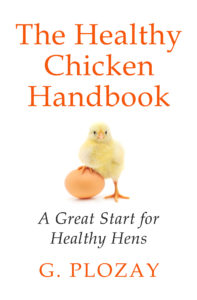

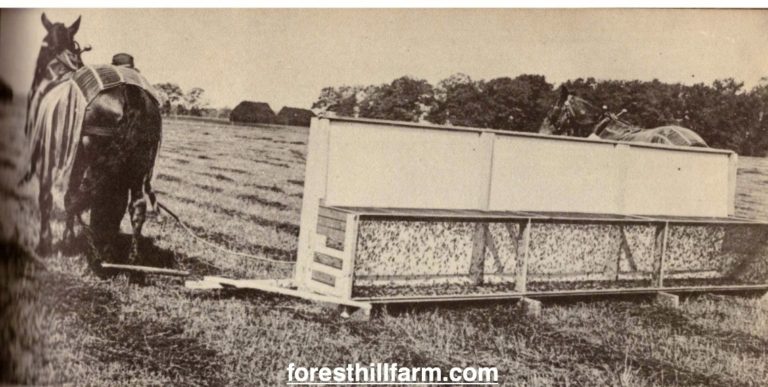
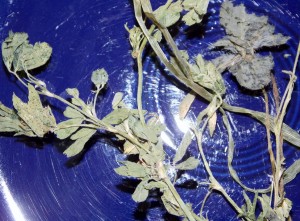 Keith brought a sprig of alfalfa into the kitchen. “The cows were pretty happy with their breakfast this morning.”
Keith brought a sprig of alfalfa into the kitchen. “The cows were pretty happy with their breakfast this morning.”
